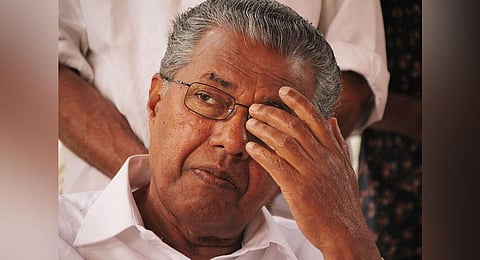

Such is the state of roads in Kerala that even the High Court had to wonder if they need to be called 'K-Roads' (at a time when K-Rail is hogging attention) for them to get the priority they deserve!
Kerala indeed deserves roads that are better in quality and with a higher degree of safety if it wishes to be called a modern -- not to mention progressive -- state. But much of Kerala's infrastructure doesn't really gel well with its widely-known and highly-acclaimed model of development otherwise seen as an example that low-income developing economies can emulate.
Cold statistics underline that Kerala leads in quantity but not in the quality of its roads. The latest figures suggest that the state has a road length of 2,38,773 km that gives it a road density of 614 kms per 100 sq.km of area. This is more than three times the density of roads in India as a whole.
One might say, Kerala is a land of roads. However, there has been a tremendous increase in vehicle density from 60.7 lakh in 2011 to 148.5 lakh in 2021 -- a nearly two-and-a-half fold increase in ten years!
It also means an increase in vehicle density in the roads that works out to be 62 vehicles for every kilometre of road! Two thirds of the vehicles are two wheelers that in the morning rush hours in cities look like an avalanche of attacking bees.
Although there are good roads in some stretches in the state, many of the narrower roads -- other than highways and major roads -- are replete with potholes that have turned dangerous for motorists. Often the borders of roads have no protective build and there is always the risk of this leading to dangerous falls.
With every monsoon, the media is full of stories of water-logging, gaping potholes and unstable borders leading to a harrowing experience of travellers irrespective of whether they are in vehicles or just pedestrians. From a larger, economic point of view, this leads to a loss of time, higher rate of depreciation of the vehicles and higher consumption of fuel.
Who is to be blamed for the manifestly bad construction and maintenance of most of the roads in Kerala? The Public Works Department directly controls only around 13 percent of the roads. But a major portion of the roads given to local self-governments are also maintained, it would seem, by a PWD created within the Department of Local Self Governments.
Whatever it is, the general perception is one of bad planning (often without drainage, low quality of topping, lack of stable foundation and so on). If corruption is often used as a synonym for the PWD, one cannot blame it only on perception. But ultimately the responsibility for building and maintaining quality roads as well as ensuring road safety lies with the state government. They need to devise solutions. Unfortunately, Kerala has to go a long way not just in the matter of roads but also when it comes to bridges, irrigation, electricity and so on.
When roads are so congested with vehicles and people, road safety becomes a casualty. Data shows that motor vehicle accidents increased from 35,000 in 2010 to 41,000 in 2020.
2979 deaths and 30,510 injuries were reported in 2020 alone. That works out to 248 deaths per month or a little more than eight deaths every day.
There is no alternative but to focus on the qualitative improvement of our existing road network instead of focusing only on adding extra kilometres. That calls for a high level of political commitment and managerial efficiency. Stringent punishment must be meted out to erring and corrupt officials and their cohorts.
The untrammelled growth of motor vehicles can lead to a situation of recurring chaos on the roads in rush hours. Strengthening public road transport is the only answer here. But one can't help but shudder at this thought since KSRTC is the existing state public transport service. Time for a paradigm change then?
(KP Kannan is a development economist and former director of Centre for Development Studies, Thiruvananthapuram. He can be reached at kannankp123@gmail.com. This is part of a series of web-only analysis columns on newindianexpress.com.)